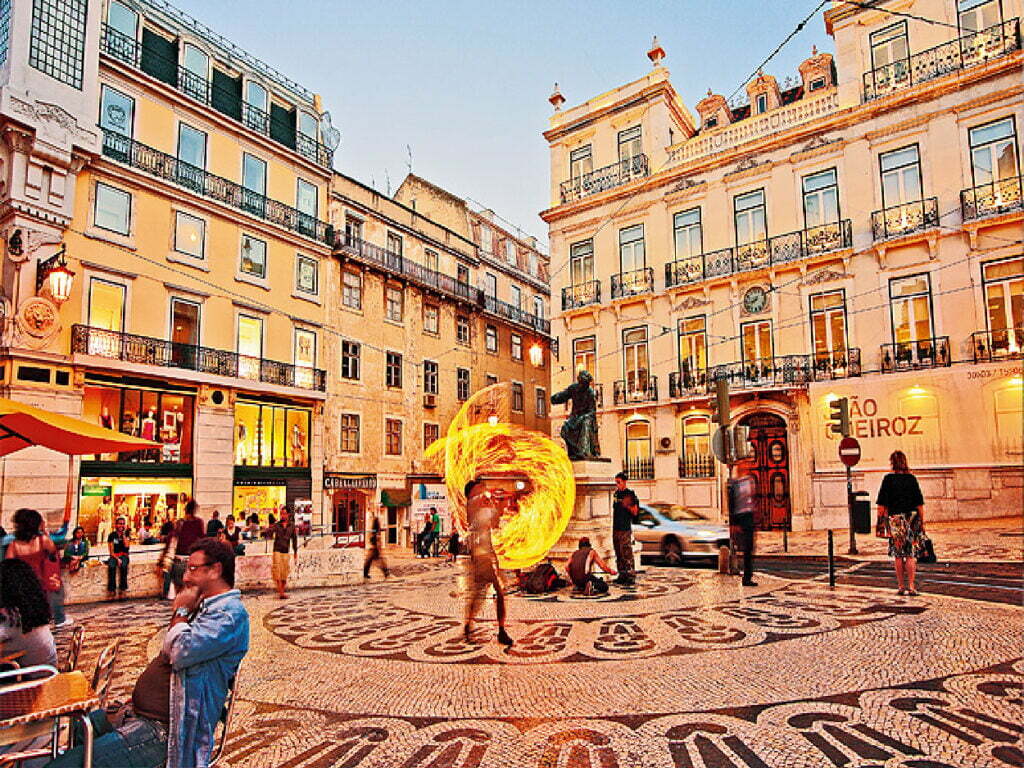
Unveiling the Timeless Charms: Exploring the Historical Places of Lisbon
Lisbon, Portugal’s enchanting capital, weaves together a rich tapestry of history, culture, and architecture that echoes through its ancient streets and iconic landmarks. Steeped in centuries of captivating tales, Lisbon’s historical places offer a journey back in time, allowing visitors to immerse themselves in the city’s illustrious past. From majestic castles to grand cathedrals and quaint neighborhoods, this SEO-friendly article invites you to explore the timeless charms of Lisbon’s historical heritage.
Castelo de São Jorge (St. George’s Castle)
Perched majestically atop one of Lisbon’s highest hills, Castelo de São Jorge stands as a symbol of the city’s storied past. This medieval fortress, dating back to the 11th century, offers breathtaking panoramic views of Lisbon and the sparkling River Tagus. Explore the ancient walls, the scenic gardens, and uncover the secrets of this iconic castle, which once served as a royal residence and a defensive stronghold.
Mosteiro dos Jerónimos (Jerónimos Monastery)
A masterpiece of Portuguese Late Gothic Manueline architecture, the Mosteiro dos Jerónimos is an awe-inspiring monument that pays homage to Portugal’s Age of Discovery. Commissioned by King Manuel I in the 16th century, this UNESCO World Heritage Site is adorned with intricate stone carvings and features an extraordinary cloister, reflecting the nation’s maritime heritage. Discover the ornate chapels and the final resting place of renowned explorer Vasco da Gama in this magnificent monastery.
Torre de Belém (Belém Tower)
A maritime sentinel overlooking the River Tagus, the Torre de Belém is an iconic fortification that once guarded Lisbon’s harbor. Built during the 16th century, this fortress seamlessly blends Moorish and Manueline architectural styles, encapsulating the spirit of exploration that defined Portugal’s Golden Age. Explore the tower’s elegant facades, take in the breathtaking views from its rooftop terrace, and learn about its role in Portugal’s seafaring history.
Alfama
Wander through Lisbon’s oldest and most charming neighborhood, Alfama, and be transported to a bygone era. Cobblestone streets, narrow alleyways, and historic houses characterize this picturesque district. Discover hidden corners, quaint taverns, and the haunting melody of Fado music that resonates through its winding streets. Alfama offers a glimpse into Lisbon’s past, evoking the essence of the city’s traditional soul.
Praça do Comércio (Commerce Square)
Once the bustling hub of Lisbon’s maritime trade, Praça do Comércio is a grand square that exudes regal splendor. Surrounded by elegant buildings, including the iconic Rua Augusta Arch, this historic square is a testament to Lisbon’s royal heritage. The bronze statue of King José I stands proudly at its center, while visitors can bask in the glorious sunshine by the Tagus River.
Palácio Nacional da Ajuda (Ajuda National Palace)
Located on the western edge of Lisbon, the Palácio Nacional da Ajuda showcases opulent interiors and Neoclassical architecture. Originally intended to be a royal residence, this palace was later transformed into a museum that houses an impressive collection of decorative arts and historic artifacts, providing a glimpse into the lives of Portugal’s royalty.
Museu Nacional do Azulejo (National Tile Museum)
Delve into Portugal’s unique art form at the Museu Nacional do Azulejo, which is dedicated to the country’s iconic ceramic tiles, known as azulejos. Housed in the beautiful Madre de Deus Convent, this museum displays a stunning array of tiles from various periods, narrating Portugal’s history and artistic heritage through these vibrant masterpieces.
Palácio Nacional de Sintra (Sintra National Palace)
Venture just outside of Lisbon to the picturesque town of Sintra, where the Palácio Nacional de Sintra awaits. This enchanting palace, also known as the Town Palace, is a captivating blend of architectural styles, featuring Moorish, Gothic, and Manueline influences. It was once the favored royal residence during the Middle Ages and is renowned for its iconic twin conical chimneys that grace its kitchen. Step inside to marvel at the opulent rooms adorned with exquisite azulejos and intricate decorations, as you journey through Portugal’s royal history.
Carmo Convent and Archaeological Museum
Delve into Lisbon’s intriguing history by visiting the Carmo Convent and its adjoining Archaeological Museum. The ruins of this once-grand Gothic church, destroyed in the infamous 1755 earthquake, stand as haunting reminders of the city’s past. The museum houses a fascinating collection of archaeological artifacts dating back to prehistoric times, offering a glimpse into the city’s ancient origins.
Sé de Lisboa (Lisbon Cathedral)
As one of the city’s oldest and most iconic landmarks, Sé de Lisboa, or Lisbon Cathedral, holds a significant place in Lisbon’s historical and religious heritage. Founded in the 12th century, this Romanesque cathedral has undergone various architectural influences over the years, resulting in a captivating blend of styles. Marvel at the stunning rose window, admire the Gothic cloisters, and soak in the peaceful ambiance of this sacred sanctuary.
Museu Nacional de Arte Antiga (National Museum of Ancient Art)
Art enthusiasts will be captivated by the Museu Nacional de Arte Antiga, which houses an extensive collection of Portuguese and European art dating from the Middle Ages to the 19th century. The museum’s rich and diverse exhibits include paintings, sculptures, textiles, and decorative arts, providing a comprehensive journey through the artistic evolution of Portugal and beyond.
Museu do Fado (Fado Museum)
No exploration of Lisbon’s historical places would be complete without experiencing Fado, Portugal’s soulful musical genre. The Museu do Fado celebrates this traditional art form, offering a fascinating insight into its history, significance, and evolution over the years. Immerse yourself in the emotive melodies and poetic lyrics that resonate through Lisbon’s streets, as Fado continues to capture the heart of the city’s cultural identity.
Lisbon’s historical places are an invaluable testament to the city’s deep-rooted heritage, weaving a captivating tapestry of art, architecture, and culture. From grand palaces and cathedrals to charming neighborhoods and museums, each site reveals a unique chapter in Lisbon’s illustrious past. Whether you’re wandering through medieval castles or admiring intricate azulejos, the historical places of Lisbon promise an enriching and immersive experience, allowing you to connect with the city’s timeless legacy and embrace its enduring allure.
